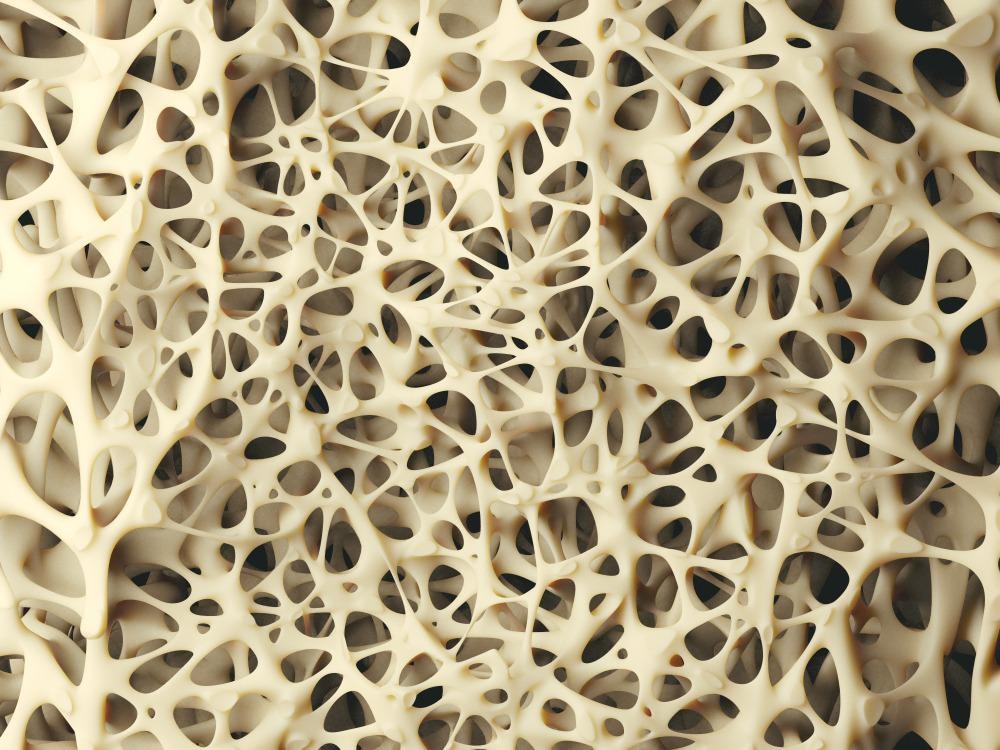Innovative researchers have investigated the potential of incorporating a gelatin methacryloyl hydrogel functionalized with synthetic nanoclay laponite to improve the delivery of osteoblast derived extracellular vesicles for increased bone repair. This research has been published in the International Journal of Molecular Sciences as a bone repair strategy that may aid in alleviating the burden of bone damage.

Study: Controlled Release of Epigenetically-Enhanced Extracellular Vesicles from a GelMA/Nanoclay Composite Hydrogel to Promote Bone Repair. Image Credit: eranicle/Shutterstock.com
With bone fracture treatment being a global socioeconomic burden, research into novel treatments has been undertaken such as the use of extracellular vesicles.
Why Are Novel Bone Fracture Treatments Necessary?
There are approximately 10 million people within the UK who have been affected by musculoskeletal disorders, as well as 1.71 billion diagnosed worldwide, as reported by the World Health Organization (WHO). Additionally, a report on osteoporosis has stated this disorder is responsible for 8.9 million fractures annually, worldwide.
With an ageing population, bone health has become a concern globally and so the demand for bone-related treatments is only increasing, illustrating the necessity of research for this field to sustain the exponential growth as well as retain the quality of life for patients.
Autologous bone grafts are currently the gold standard for treating diseased or damaged bones; however, with limitations such as lack of availability, accessibility and donor site morbidity, this route of treatment may not be the most efficient for bone repair.
Additionally, other treatment options have shown positive clinical results, such as combining bone graft substitutes with osteoinductive growth factors including bone morphogenic protein 2. This route can also cause complications with adverse effects such as hematomas and myelopathy.
The limitations for these current strategies of bone repair have led to the need for more innovative approaches for damaged bone regeneration.
This field of cell-based tissue engineering has been found to show promise with osteoinductive biomaterials being combined with mesenchymal stromal cells (MSCs) for bone augmentation, however, direct transplant of MSC-based therapies has been shown to have produced adverse effects including immunological rejection, uncontrolled differentiation and even the formation of neoplasms.
Other limitations for cell-based therapies for clinical translation also include cost, lack of scalability within manufacturing, governmental regulations as well as potential ethical issues.
This realization has led researchers to investigate cell-free strategies as a method to promote bone regeneration and repair for diseases and disorders.
Innovative Bone Repair Approach
Extracellular vesicles (EV) could be the potential key to bone regeneration, with these acellular tools being lipid nanoparticles that can carry a diverse range of biological cargo, such as nucleic acids and proteins.
These naturally derived nanoparticles hold a significant function in bone development with roles in mediating intercellular communication between osteoblasts and osteoclasts, bone cells that synthesize and break down bone tissue, respectively.
Additionally, the inclusion of epigenetics to modify the differentiation capacity of cells for bone augmentation holds the potential to enhance EV mineralization.
Previous research has found EVs that are isolated from osteoblasts and treated with the histone deacetylase inhibitor Trichostatin A (TSA), can lead to enhanced osteoinductive potency, which may be due to enrichment in pro-osteogenic microRNAs and transcriptional regulating proteins.
However, the issue with EV consists of the short half-life which limits their therapeutic utility, with local administration into the defect area having transient results and requiring effective injections to be clinically successful.
This illustrates the necessity for advancements to effectively facilitate the delivery of EVs in order to improve their bioavailability in situ.
Innovative Research
Novel research has included the utilization of gelatin methacryloyl (GelMA) hydrogels which were functionalized with synthetic nanoclay laponite (LAP) with the aim of improving local retention and control delivery of osteoblast-derived and TSA treated EVs that have been epigenetically enhanced for bone repair.
This innovative combination has been found to enhance the proliferation of human bone marrow stromal cells (hBMSCs) as well as increasing migration, histone acetylation and mineralization compared to the control group of untreated EVs. Additionally, the TSA-EV functionalized GelMA-LAP hydrogel was able to significantly promote encapsulated hBMSCs extracellular matrix collagen production as well as increase mineralization.
This illustrates the significance of combining epigenetics through the histone deacetylase inhibitor Trichostatin A (TSA) with osteoblast-derived EVs as well as a nanocomposite hydrogel which was able to enhance the therapeutic efficacy of delivery for bone repair and regeneration.
Future Translation
The translation for this research consists of the development of using EVs as a pro-osteogenic acellular tool; this has the benefit of not using a cell-based therapy which can have complications such as high expense as well as immune rejection. Additionally, this innovative approach also solves the challenge of the half-life originally attributed to EVs.
This nanotechnology has the potential to be used clinically as a method to promote bone regeneration, a field that has limited treatments and so an innovative development can lead to quality care of a global aging population.
Continue reading: Analyzing Novel Orthodontic Composite Resins with Nanoparticles for Antibacterial Properties.
Reference
Man, K., Barroso, I., Brunet, M., Peacock, B., Federici, A., Hoey, D. and Cox, S., (2022) Controlled Release of Epigenetically-Enhanced Extracellular Vesicles from a GelMA/Nanoclay Composite Hydrogel to Promote Bone Repair. International Journal of Molecular Sciences, 23(2), p.832. Available at: https://www.mdpi.com/1422-0067/23/2/832
Further Reading
Osteoporosis.foundation. (2022) Epidemiology of osteoporosis and fragility fractures | International Osteoporosis Foundation. [online] Available at: https://www.osteoporosis.foundation/facts-statistics/epidemiology-of-osteoporosis-and-fragility-fractures
Who.int. (2022) Musculoskeletal conditions. [online] Available at: https://www.who.int/news-room/fact-sheets/detail/musculoskeletal-conditions#:~:text=Approximately%201.71%20billion%20people%20have%20musculoskeletal%20conditions%20worldwide.,burden%20with%20a%20prevalence%20of%20568%20million%20people.
Disclaimer: The views expressed here are those of the author expressed in their private capacity and do not necessarily represent the views of AZoM.com Limited T/A AZoNetwork the owner and operator of this website. This disclaimer forms part of the Terms and conditions of use of this website.